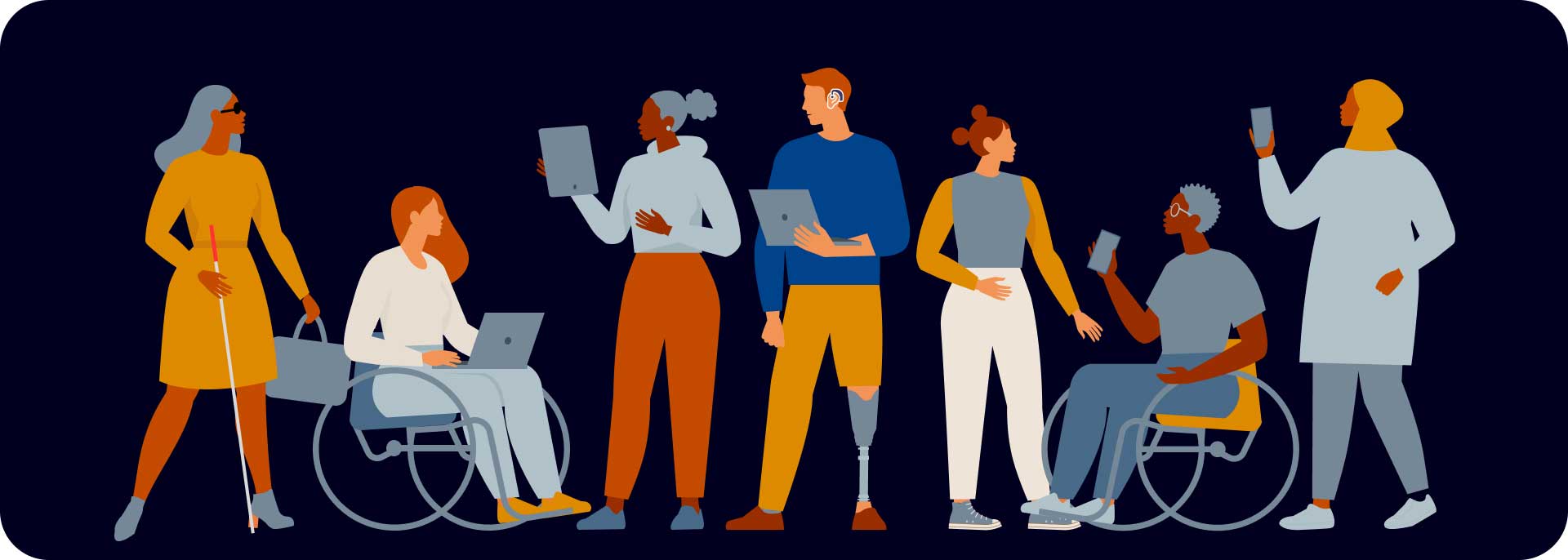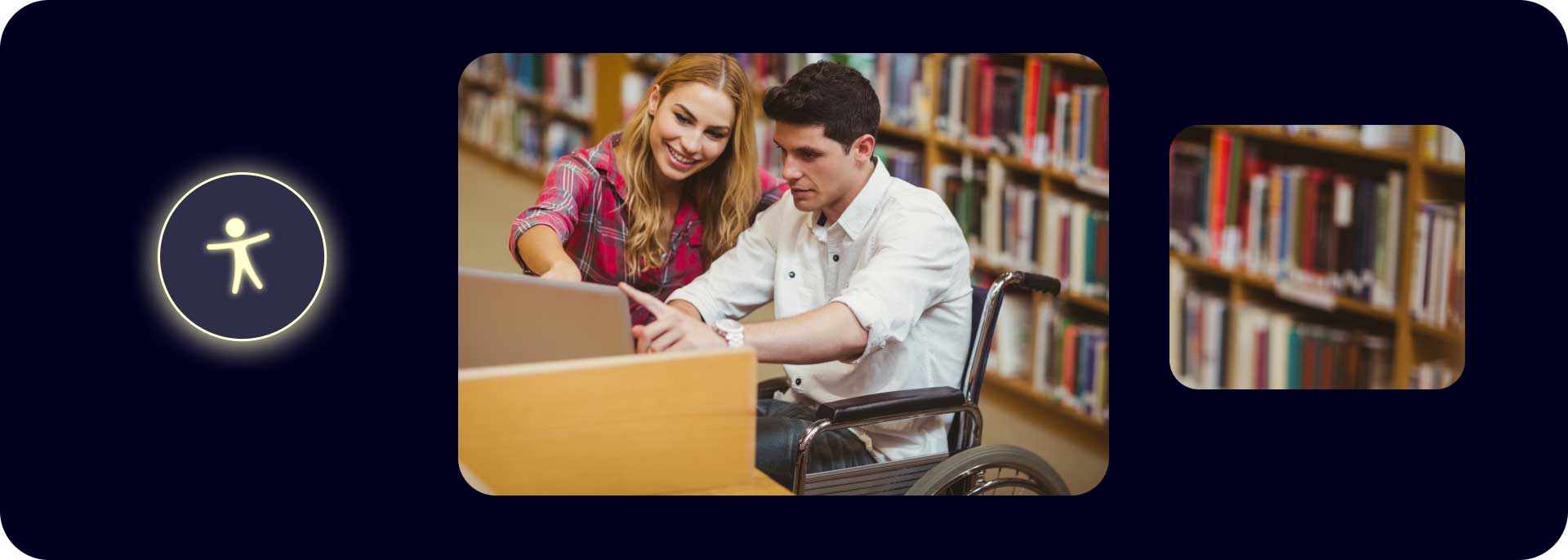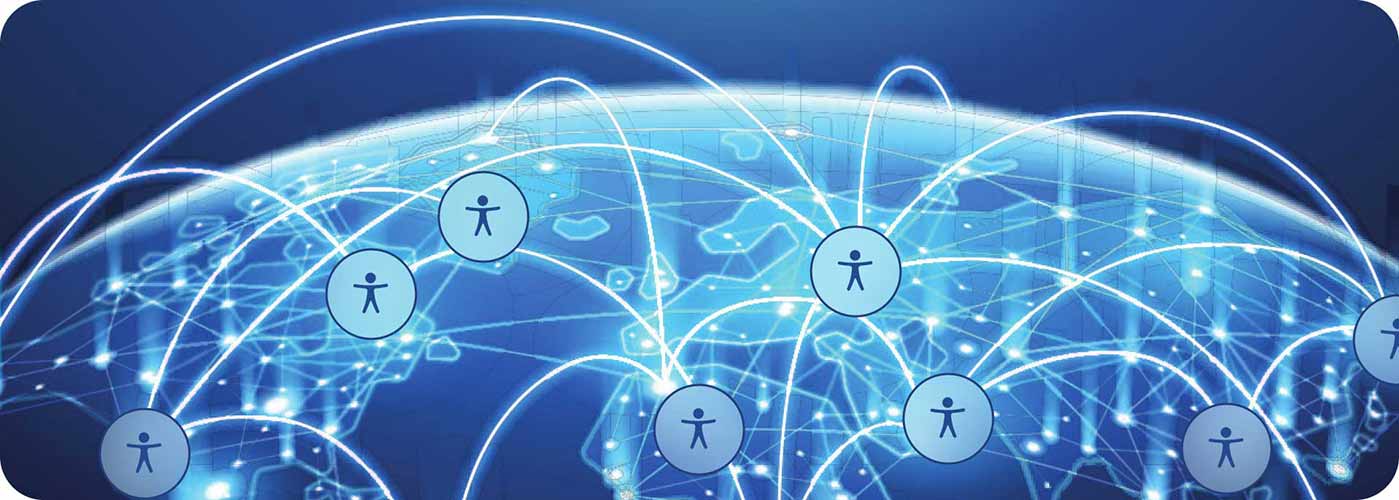Dollars to Digital: Making the Virtual World More Accessible for All Users
Digital accessibility, access to connectivity as well as technology, and the knowledge to engage with them are all basic prerequisites for inclusive online spaces that are truly accessible to everyone. People with disabilities and people in low-income situations are two groups that often overlap, for many reasons. This article covers a few of the laws that promote accessible and affordable digital experiences, including low- or no-cost mobile phones and services for those in need, and the growing trend of initiatives providing discounted or free internet access and basic technology and web use training programs for underserved communities.
Digital Access, Despite Disenfranchisement
In our highly connected and rapidly evolving digital era, access to the internet and digital tools has become essential for participation in many major segments of society. However, for people in low-income situations, there’s an invisible entry fee that can’t always be met. Securing connective hardware and software, as well as learning how to engage with these resources, remains a significant challenge. And that’s before we even tackle the question of whether these electronic devices and data are accessible to people with disabilities.

What is Digital Accessibility, and Why is it So Important?
Digital accessibility refers to the design and creation of digital content and technologies, such as websites, mobile apps, and electronic documents, in such a way that they are usable by everyone, including people with disabilities. This concept encompasses tools and applications that take into consideration a wide range of disabilities, including visual, auditory, physical, speech, cognitive, and neurological disabilities. The goal of digital accessibility is to remove barriers that prevent interaction with, or access to, digital tools and services.
Digital accessibility is crucial for ensuring that everyone has equal opportunities to access information, education, employment, and other aspects of modern life. In the current tech-reliant era, many essential services and resources, as well as human interaction, are increasingly offered online. A lack of digital access can lead to social exclusion, economic hardship, and diminished quality of life.
Financial Barriers to Online Connectivity
Access to the internet and telecommunications services may have become increasingly essential for modern life. However, for individuals living in poverty or experiencing homelessness, or even for people who are struggling to pay their basic bills, as so many are these days, these essential electronic services can be difficult to obtain and maintain, creating significant barriers in their personal and professional lives.
Skip the Blame, Never Shame
The cost of internet service, mobile phones, and data plans can be prohibitive for those struggling to meet their basic needs. This financial strain often forces people to forgo these services, limiting their ability to connect with others, access information, and utilize online resources.
While programs do exist that can help people get cell phones or internet access, among other things, there can be a deep sense of shame or inadequacy attached to taking what some would consider “a handout”. People who are jobless, impoverished or homeless may even be mocked for owning a cell phone in their financial circumstances. Blaming poor people for their poverty is inaccurate and unfair. This type of blame often stems from a sense of guilt or discomfort among those who may be more fortunate. We may feel helpless or unable to fix systemic problems, such as inadequate education, lack of access to affordable housing and healthcare, and discriminatory practices in the job market. An uncomfortable thought for anyone, when so many people are struggling.
Individuals experiencing financial distress may also blame themselves, without recognizing the impact of the economic situation on their financial well-being. During times of economic hardship, even responsible professionals may face difficulties due to factors beyond their control, such as unemployment, unaffordable rent, high medical bills, and unexpected expenses. There is no shame at all in accepting help in meeting some of the high costs of badly needed tools, services and training.
Low Income May Lead to Low Tech Literacy
Beyond day-to-day financial constraints, low-income and homeless individuals or people coming from those backgrounds may also face cumulative technological barriers that hinder their ability to go online or use mobile devices effectively. Lack of familiarity with digital technologies, limited technological literacy skills, and unfamiliarity with online platforms may all result from a low-income environment. These seemingly small snags can create significant hurdles in navigating the digital world, amplifying existing social and economic marginalization.
Financial Hardship and Disability: Dual Challenges
For people who have disabilities, and who are living with low or no income, the obstacles to online connectivity are compounded. The financial constraints and technological barriers they already face are amplified by the unique needs associated with their disabilities, which are often not provided for in online and digital settings. Many websites, online platforms, and mobile applications are not designed to be accessible to individuals with disabilities. This lack of accessibility creates significant barriers.

Road Closed: Information Superhighway
The inability to access reliable internet and telecommunications services can have profound consequences for individuals with disabilities, particularly in terms of employment and social isolation. Without access to online job boards, professional networking platforms, and virtual communication tools, their ability to seek employment and maintain social connections is significantly hampered.
Furthermore, the lack of online connectivity can limit access to essential healthcare services and mental health support. Telehealth services, which provide remote medical consultations and mental health counseling, are often inaccessible to those without reliable internet access. This can exacerbate existing health disparities and hinder their ability to receive timely and appropriate care.
Life, Liberty, and the Pursuit of a Platform: A Fundamental Right
Digital accessibility means all individuals, regardless of their abilities, can participate fully in our pervasively wired and wireless society. Today, digital accessibility is not a convenience or a gesture towards inclusion: it is recognized by many as a fundamental human right. The United Nations Convention on the Rights of Persons with Disabilities (CRPD) (pdf) recognizes the importance of digital accessibility and explicitly states that persons with disabilities have the right to access information and communications technologies (ICTs) (pdf) on an equal basis with others.
The intersection of poverty and disability creates a profound digital divide that can have a devastating impact on individuals' lives. Without access to the internet and telecommunications services, people in financial difficulties who also have disabilities face very serious barriers in accessing information, maintaining social connections, seeking employment, and receiving essential healthcare services. Addressing these challenges requires a multifaceted approach that includes ensuring affordable access to digital infrastructure, promoting digital literacy training, and advocating for inclusive design of online platforms and mobile applications.
We can empower individuals with disabilities and low-income individuals to fully participate in the digital world and break the cycle of disconnection.
A Positive Trend: Accessible Web and Digital Tools and Services
Growing initiatives in many places are working to make web and digital tools and services more accessible to underserved populations, including low-income individuals with disabilities. These initiatives are providing discounted or free internet access, offering free training programs, and distributing mobile phones at reduced cost or for free. Many government and independent or telecom-led programs also supply discounted or free internet to low-income disabled individuals who qualify, and to people who are on Social Security disability.
And, our great community treasure, public libraries, often offer free internet access as well as computers, serving as a vital resource for those without home internet.
Free Training Programs Mobile Phone Programs More Inclusive Initiatives Some organizations offer free training programs to educate users about digital tools. These programs are crucial for those who might not have grown up with technology or who need specific assistance due to disabilities. Programs run by some government agencies may offer cell phone plans for persons with disabilities at reduced costs, or even for free. These programs are essential to ensure connectivity for everyone. Other wonderful initiatives include community-driven wifi networks in underserved areas, partnerships between nonprofits and tech companies to provide low cost internet for individuals with disabilities, and vocational training programs focused on digital skills for people with disabilities.
Initiatives Providing Discounted or Free Internet Access in the US
| Lifeline | Affordable Connectivity Program | Internet Essentials |
| A US federal program that provides discounted or free phone and internet service to low-income households. | Also called ACP, this is a government subsidy that helps eligible American households afford high-speed internet service. | An Xfinity program that provides low-cost internet service to eligible families in some areas of the United States. Other telecom companies offer similar programs as well. |
Free Training Programs Educating Users About Digital Tools and Resources
These are available to users worldwide, so take advantage of them!
Applied Digital Skills TechSoup FreeCodeCamp A Google initiative that provides free digital skills training to individuals and communities. A non-profit organization that offers free and low-cost technology training and resources to nonprofits. A non-profit organization that provides free web development training.
Programs Providing Mobile Phones at Reduced Cost or for Free (US)
| Assurance Wireless | SafeLink | Access Wireless |
| A non-profit through Virgin Mobile that provides free cell phones and service to eligible individuals in certain parts of the United States. | A government program that provides free mobile phones and service to Americans who qualify, through TracFone Wireless. | A non-profit organization that provides free mobile phones and service to people in the US who are eligible, as part of the ACP government initiative. |
More Options for People with a Disability in Low-Income Situations
| Local Public Libraries | Community Centers | Nonprofit Organizations |
| Public libraries in the US and around the globe often offer free computer access and internet connectivity, along with digital literacy training programs. You may not even need a library card. Just ask a librarian. | Community centers in many countries often provide computer access and digital literacy training to underserved communities. This may be on a walk-in basis, or you may have to arrange it by signing up. | Some nonprofit organizations focus on providing digital access and training to individuals with disabilities. Ask friends and family to find out if there is a nonprofit like this near your location. |
Legislation for Digital Accessibility
Legislation plays a critical role in promoting digital accessibility. Laws such as the Americans with Disabilities Act (ADA) and Section 508 of the Rehabilitation Act in the United States mandate that digital services and websites be accessible to people with disabilities. Worldwide, laws and regulations around accessibility establish clear standards for accessible design, require businesses and government agencies to make their websites and digital tools accessible, and provide enforcement mechanisms to ensure compliance.
This type of legal framework for accessibility often starts with advocacy from individuals and grassroots organizations, building momentum until it becomes part of government policy.
Accessibility Advocates: From Small-Time Noisemakers to Government Law
It has always been true that the squeaky wheel gets the grease, or, in other words, those who speak up about their problems are more likely to be taken care of. Individual accessibility advocates, often people with a disability, or their families, friends, and loved ones raise awareness about the importance of accessibility and share their experiences with challenges they and other people with disabilities face. Grassroots organizations may then grow from the small or single-person push for better rights and services into larger groups that can successfully advocate for policy changes and provide support to underserved communities. Once these accessibility advocates have raised awareness and made it clear to everyone that they need and deserve change, eventually government bodies, through legislation and regulations, create a framework that can practically guide and enforce digital accessibility.
Digital Accessibility Benefits for Businesses
When businesses improve digital and web accessibility, they benefit as well.
➕ Customer Base ➕ Brand Reputation ➖ Litigation & Penalties ➕ Innovation By making their products and services accessible to a wider audience, businesses can expand their customer base and reach new markets. Demonstrating commitment to accessibility can enhance a company's brand reputation and attract customers and partners who value inclusion and diversity. Why take chances? Failure to comply with accessibility laws and regulations can lead to costly litigation and penalties. By proactively addressing accessibility compliance, businesses can protect themselves from legal risks. By involving people with disabilities in the design and development of their products and services, businesses can gain valuable insights and perspectives that can lead to innovative solutions and a more inclusive user experience.
Towards a More Accessible Future
Digital accessibility is a critical issue that has far-reaching implications for individuals, society, and businesses. By making digital technologies accessible to everyone, we can create a more inclusive, equitable, and prosperous tomorrow. A commitment to inclusivity is not only the right thing to do, removing unfair barriers for individuals with disabilities, it also enriches our communities and economies in ways that reach far, far beyond the merely financial. By continuing to advocate for and implement accessible practices, we move closer and closer to a future where everyone can fully participate in our world, online and off.

FAQs
What are some simple steps to make digital content more accessible?
Set consistent navigation. Employ a high-contrast color scheme. Use clear and concise language, provide alt text for images, make sure that websites are navigable by keyboard, and add subtitles or transcripts for audio and video content. And, regularly perform accessibility testing or have accessibility experts do it for you.
Can small businesses afford to implement digital accessibility?
Yes, many digital accessibility practices are cost-effective and can be implemented right away or gradually. There are also various resources and guides available online to assist small businesses in this process.
How does digital accessibility impact education?
Digital accessibility is crucial in providing equal access to learning materials and platforms for all students.
Are there any global standards for digital accessibility?
Yes, the Web Content Accessibility Guidelines (WCAG) by the World Wide Web Consortium (W3C) are widely recognized as the international standard for web accessibility.
What are some resources for learning more about digital accessibility?
There are many resources available to help you learn more about digital accessibility. Start with learning about the WCAG.
What are some of the challenges of making digital technologies accessible?
Technical complexity: Designing and developing accessible technologies requires specialized knowledge and expertise. Cost: Implementing accessibility features can involve additional costs for businesses and organizations. Lack of awareness: Many individuals and organizations are not aware of the importance of digital accessibility or the legal requirements.









